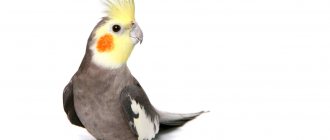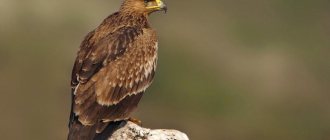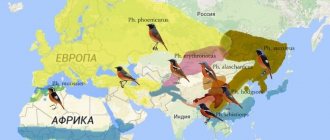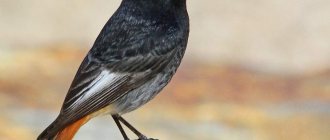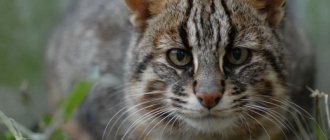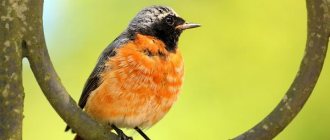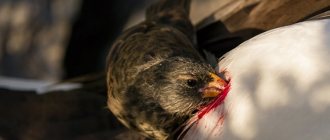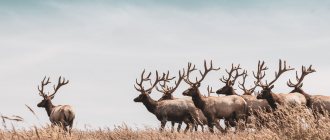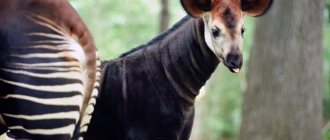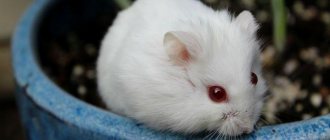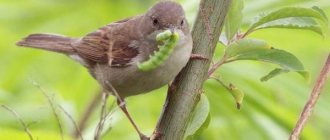When someone utters the phrase “The morning begins with birds,” there is immediately a feeling of transparent trembling air, into which ringing trills harmoniously fit. Among those who awaken the sun is the redstart, a small bird of the passerine family.
It is easy to recognize - the plumage is contrasting, of different colors depending on its habitat, and the tail, constantly twitching, is always brick-red, like a burning light. A sonorous voice can be heard in gardens and parks, but many people have not heard anything about the bird or know very little.
Origin of the species
The redstart was first described by the Swede Carl Linnaeus in 1758. The naturalistic publication Systema Naturae presented a species called Motacilla phoenicurus. The description was formal, superficial, and did not reveal the main characteristics.
In 1774, Samuel Gmelin, a German naturalist, described the black redstart, classifying it as a member of the thrush family. 50 years later, the English naturalist Tomos Forster designated the genus Phoenicurus, which literally translates from Greek as “purple or carmine-colored tail.”
When described, redstarts were already assigned to the family Muscicapidae: “fly” and “catchers”. This was facilitated by numerous observations, DNA analyses, and molecular studies by many scientists. White-fronted redstarts were the first to be spotted in Europe.
Ornithologists believe that the species became independent, separating from the group of black redstarts about 3 million years ago!
Diet
The moorhen is very unpretentious in nutrition and can easily eat almost any food - both plant and animal. Usually the bird wanders through the water in search of food, studying the shore, plants, sometimes plunging headlong into the water and even diving.
True, the chicken dives reluctantly - especially at depths, where it hardly swims, simply holding itself in an upright position, holding on to nearby plants with its paws.
On the water, the moorhen moves with great grace, deftly and well maneuvering, changing direction very quickly. And while swimming, it funny shakes both its head and tail.
Photographer – Lyudmila Bekman
On land, the bird also feeds very variedly - mainly coastal grasses (seeds) and berries, and their diet also includes insects, plant shoots, cereals, algae, various invertebrates, larvae, worms, mollusks and tadpoles.
Varieties
The order of passerines of the flycatcher family includes 13 species of redstarts. The common feature is an awl-like beak and a fragile body build. The color of the tail feathers is also united by red in different tones.
Males are brighter than their female friends, who “wear” less colorful outfits. Having met a bird, you can easily find out who it is, focusing on the description of the male’s appearance.
Alashan redstart
The head is gray, the entire body and back are orange, the wings have longitudinal black and white distinct stripes. The species has been assigned the status “Near Threatened.” Habitat: Eurasia.
Red-backed Redstart
Named because of the brown color of not only the lower half of the body, but also the back. The head is black.
Grey-headed Redstart
A species close to vulnerable. Secretive, active mainly in the evening. The head, crop, wings are black, the underparts are white. There is gray hair on the head. The weight of an adult bird is 35-40 g. It lives in the subtropics and tropical forests. There are 2-3 eggs in a clutch.
Redstart
Apart from the brick-red tail, the entire body is black, interspersed with white.
Common redstart (coot)
The back is gray, the neck and cheeks are black, there is a white spot on the head, the belly is orange, and the tail is red. The most common type.
Field redstart
Black head, neck, back. The bottom is dark brown. There is a small white spot on the wing.
White-throated Redstart
The bright orange belly stands out against the background of the black back; on the head the blackness turns into a blue tint. There is a white spot on the crop. The wing has white and orange stripes.
Siberian redstart
The back and head of the bird are brown, the neck and crop are black. There is a white spot on the wing.
White-browed Redstart
Named because of the pronounced white stripe on the black head. The abdomen is orange.
Red-bellied Redstart
Head, back, neck, wings are black. There is a white cap on the head, the ends of the wings are also white. The abdomen is red.
Blue-fronted Redstart
Instead of a black head and back, this species has bluish plumage. The bottom is orange-brown.
Falcon
When talking about the families of birds of prey , you should definitely remember falcons. First of all, their representatives are the falcons themselves. How do these birds differ from hawks? They are larger and grow on average up to 60 cm, and the weight of the most prominent ones reaches 2 kg. Falcons have sharp wings, not at all like the short and blunt wings of a hawk.
Their eyes are not yellow, like the latter, but dark brown, and their tail is noticeably shorter. Falcons fly swiftly, pounce on their victims from a great height, tear them apart with their talons, and then finish them off with their strong beak. Such birds are widespread around the planet, like many other members of the falcon family.
Description of the bird
The small bird does not exceed the size of the common sparrow, but, in comparison, is more graceful. Behavioral similarities with Zoryanka have been noted. Redstarts sing almost around the clock, with trills being especially active in the morning and at sunset.
For most of its life, the redstart moves by jumping like a sparrow, but it can also run. Flexibility of movements allows you to choose the method when catching prey.
What does it look like
The weight of an adult is only 20 g, the wingspan is 25 cm. The wings are small and strong. The body is slightly elongated, with a narrowed end, 15-16 cm in length, the head is proportional in shape, the beak is sharp, flattened, elongated.
The beady eyes are dark and shiny. The tail opens during flight and becomes like a fan. The legs are thin, dark gray or black, the claws are small and sharp.
The combination of plumage colors is so diverse that inexperienced nature lovers have difficulty identifying the species.
Differences between a female and a male
The sexes of birds are distinguished by color. The appearance of the male is always brighter. For example, the common redstart is grayish-brown, with a reddish belly.
The male looks “richer”: the back and head are gray, there is a white spot on the forehead, the throat and neck on the sides are black, the belly is orange-brown, and a bright tail completes the ensemble. The male is easier to notice in nature, in contrast to the modest plumage of the female.
Character and lifestyle
The redstart is active, energetic, and constantly on the move. A special feature of the bird is the ability to “hover” in flight, as hummingbirds do.
Before building a nest, the male chooses a location. It makes no difference whether it is located high or low. This could be a hollow tree, a crevice between stones, a place under a roof overhang, or in a fork in branches. The main thing is that the place is safe, sheltered from direct wind and precipitation.
The singing resembles the sound of “fewit-tick-tick.” Redstarts know how to sing, love to sing, and devote up to 6 hours a day to solo performances, repeating individual fragments 5,000 times in a row.
They live alone or in pairs. They can gather in flocks if a cluster of insects is noticed in one place. At the end of July and beginning of August, redstarts moult. Life expectancy is 7-9 years.
What does it eat?
The diet includes small invertebrates and insects: caterpillars, spiders, grasshoppers, bugs, beetles of various types. The bird collects worms, snails, ants, and woodlice. Catches butterflies, dragonflies, flies, mosquitoes. Does not affect defensive insects (wasps, bees).
In cold weather, when small animals are hiding, the berries of chokeberry and common rowan, elderberries, currants, and plant seeds are used. During the period of feeding the chicks, the female sometimes brings berries to the babies, expanding the diet.
Where does it live?
The redstart is found in forests, park areas, and near homes. Belongs to migratory, nesting species. The bird can be found in various climatic zones, from Great Britain to Yakutia. They also live in Asia, mainly in China and the foothills of the Himalayas.
Large populations in the steppe, boreal, and Mediterranean zones of Europe. In an eastern direction, it nests from Siberia to Lake Baikal. It is found in Crimea, the north of the Black Sea, eastern Turkey, and the Caucasus. European populations number 7-9 million pairs.
Redstarts settle on the edges and in the depths of deciduous forests, in any zone of temperate or subtropical climate. In mountainous regions, he selects rocks and slopes, as well as cultural monuments: castles, stone buildings.
The main conditions for settlement are the presence of open areas with low-growing vegetation where the bird gets its food, as well as old, dilapidated trees where it is convenient to hide a nest. Abandoned gardens, parks, forest edges where there are stumps, trees with hollows are the main habitats.
Reproduction
Birds reach sexual maturity at one year of age. In the spring, in mid-April, male redstarts are the first to return from wintering. It is the male who selects the site for the nest. Having chosen a suitable one, he protects it from other birds that strive to occupy a convenient territory.
After the arrival of the females, the mating season begins. If the female is satisfied with the male (appearance plays an important role) and the place he has chosen, mating occurs. Next, the female spends 7-8 days building the nest.
She carefully lines the bottom with bark, thin branches, scraps of paper, and thread. The nest is invisible from the outside - the bird camouflages itself so well. Males rarely participate in arranging a home for the chicks.
The bird lays 5-7 eggs with a greenish-blue tint into the finished cup-shaped nest. Hatching lasts exactly two weeks. At first, the female leaves for a short time to find food for herself. She regularly turns the eggs over with her beak. This promotes the proper formation of embryonic organs.
The hatched chicks are blind, deaf, and unfledged. In cold weather, the female does not leave the nest; the male carries food. Feeding the brood lasts 14 days. During this time, adult birds bring thousands of caterpillars, flies, and larvae.
Chicks are very voracious during their growth period. At first, the couple catches small midges, caterpillars, and mosquitoes for the kids. As they grow, the food becomes larger: the parents try to catch large prey.
Having flown up to the nest, the female holds the insect tightly in her beak, bringing it in turn to the open beaks of the chicks. They tear off parts of the food they brought, so in one flight the redstart feeds not one, but several “children” at once.
Throughout the “childhood period,” the female carries the litter away from the brooding site.
After 2 weeks, the chicks begin to leave the nest if it is located on the plain. Another 6-7 days should pass before the first flight. The fledgling young get food on their own, but do not go far from their home and live nearby.
Natural enemies
The bird's natural secrecy helps achieve high survival rates. A well-hidden nest and caution contribute to the almost complete safety of the brood.
However, natural losses occur quite often. A small, nimble bird often becomes prey for large representatives of the bird kingdom: owls, crows, hawks. In addition to omnivorous birds of prey, a nest can be destroyed by a cat, a marten, as well as the ubiquitous snakes that eat the entire family at once: eggs, chicks, adults.
Mortality is affected by seasonal cold snaps, especially in those families where one female is responsible for feeding. Birds often become victims of ectoparasites. Factors in population decline include the cuckoo's egg-tossing behavior.
Redstarts, having ideal maneuverability, rarely become victims of vehicle traffic.
Wintering
The migratory bird in spring and summer is busy nesting and raising chicks, and in winter it migrates to areas close to the savannah climate: to Africa or the Arabian Peninsula. It also winters south of the Sahara, in the east of Sengal, in Yemen.
Depending on the area, flight to warmer regions occurs at the end of August - October. The birds return in April, first the males, then the females.
Peregrine Falcon
This feathered predator from the genus of falcons is famous for its flight speed, which is up to 90 m/s. The bird's swiftness is most evident during steep dives, but not during horizontal movement. The size of such birds is no more than half a meter, although the size, as well as the feather color, depend on the species. But one particular detail is interesting.
There are no feathers around the peregrine falcon's large, watchful eyes, which have a third eyelid. And therefore their dark brown eyes appear to be emphasized by yellow outlines. Such birds attack mainly other medium-sized birds, pigeons, starlings, blackbirds, and less often gophers, squirrels and hares. Voles and snakes also become their victims. The peregrine falcon attacks most often at the moment of a vertical fall, killing its prey with a crushing blow.
All the characters presented above are diurnal birds of prey . And this means that they get their food during daylight hours. But nature itself took care of the feathered hunters, dividing their spheres of influence. That is why there are some of them who go out hunting at night.
The peregrine falcon is the fastest creature on Earth, the speed of “falling from the sky” reaches 320 km/h
Redstart in the Red Book
With the advancement of technology, the population has declined sharply since about 1980. Expansion of construction in the habitats of species, the use of pesticides, and climate change in wintering areas leads to a decrease in numbers in some regions.
For example, if there are fewer redstarts in France and England, then the overall population in Europe has increased and is not classified as an endangered species.
The gray-headed redstart (Phoenicurus phoenicurus) is listed in the Red Book of Russia. Among the birds protected by the Red Book of the International Union for Conservation of Nature is the Angolan Redstart.
Many regions include birds living in their territories in the local Red Data Books. For example, the Tyumen region included the black redstart on the list of protected species, and in Tajikistan the gray redstart has a protected status.
Features of character and lifestyle
Photo: Red cardinal in winter
Red cardinals are not migratory, but are year-round residents throughout their range. They are active during the day, especially in the morning and evening hours. During the winter, most cardinals flock and live together. During the breeding season they are quite territorial.
Red cardinals prefer a secluded place where they feel safe. The type of areas that provide excellent coverage are dense vines, trees and shrubs. There are many types of trees and shrubs that red cardinals are drawn to for nesting purposes. Planting shrubs such as grapevine, honeysuckle, dogwood and juniper can provide ideal cover for their nests. In winter, evergreen trees and shrubs provide safe and adequate cover for these non-migratory birds.
Red cardinals do not use birdhouses for nesting. Instead, the male and female will look for a densely covered nest a week or two before the female begins to build one. The actual location tends to be where the nest is wedged into a fork of small branches in a shrub, sapling, or tangle. The nest is always hidden in dense foliage. The most common trees and shrubs selected by red cardinals include dogwood, honeysuckle, pine, hawthorn, vine, spruce, hemlock, blackberry, rose bushes, elms, elderberries and sugar maples.
Fun fact: Female red cardinals are responsible for nest building. They usually build nests from twigs, pine needles, grass and other plant material.
Once a location is chosen, the male usually brings nesting materials to the female. These materials include strips of bark, coarse thin twigs, vines, grasses, leaves, pine needles, plant fibers, roots and stems. The female crushes the twigs with her beak until they become flexible, and then pushes them with her paws, creating a cup shape.
Each nest has four layers of rough twigs that are covered with a leaf mat, lined with vine bark, and then trimmed with pine needles, grasses, stems, and roots. Each nest takes up to 10 days. Red cardinals will only use their nesting site once, so it is important to always have plenty of trees, bushes and materials nearby.
Meaning for humans
Increasingly, people are attracting this species closer to villages. Birds settle in birdhouses and barns, adapting to a mutually beneficial neighborhood. The bird gets a cozy place to nest.
More and more often we come across notes that a bird with a red tail takes up residence in birdhouses or abandoned swallow nests. Birds bring invaluable benefits to humans by eating pests in gardens and summer cottages. And what is the value of the sweet, pleasing singing!
Interesting facts about the bird
- After fertilization, the male can begin courting several more females. This is normal for this bird species. It is noteworthy that he also takes turns flying in to care for the chicks. It happens that he flies to one nest more often, but rarely visits another.
- During the season, a couple manages to raise 2 broods. The second laying of eggs occurs in mid-to-late July. This way young birds will learn to fly well and become stronger for winter migration. The second clutch consists of 3-4 eggs.
- In case of danger awaiting a nest with chicks, the parents loudly shout “tek-tek-tek”, fly from branch to branch, try to attract attention and move them away from the chicks.
- It has been noticed that the bird does not welcome water treatments; to get rid of parasites, it bathes in dust. And he loves to bask: when he is not getting food for the eternally hungry chicks, he rests in the sun.
- It is interesting to watch how the female searches for food: she takes up an observation post on a hill, and then suddenly dives to the ground. It does not immediately swallow the prey, but eats it in a secluded place. The male most often hunts in flight.
- Keeping it at home is possible, but has some peculiarities. When placing a bird in a cage, its wings are tied up, otherwise it may get hurt by hitting the bars, trying to break free. They don’t live in twos, individuals fight. They get used to people poorly and sing little.
- In 2015, the redstart became bird of the year. This means that this year is devoted to the collection of phenological data, sharpening attention to the problems of the species population.
The bird that in the ancient fairy tale brought fire to people on its tail is it, the redstart. A little hardworking bird eats harmful insects and garden pests. Watching redstarts is a pleasure.
From spring to early autumn, they not only manage to raise a couple of broods of chicks, but also delight with their sonorous singing. Man, in turn, can help redstarts by building houses in which the birds will willingly settle.
Hoopoe breeding
By the first year, hoopoes reach sexual maturity. Males occupy territories and attract females with their loud calls. Pairs are formed once and for life, and nesting sites are used for several years.
Hoopoes settle at a distance, otherwise conflicts over territory cannot be avoided. Nests are hidden in hollows or crevices, but sometimes birds build them right on the ground. The nest itself is very simple, without lining and smells unpleasant.
Once a year, the female lays several small oblong eggs, depending on weather conditions. Moreover, she lays only one egg per day, and immediately begins to hatch it.
The incubation period lasts about 2 weeks, and during this time the male obtains food. Later, the hatched chicks are fed by both parents, and after 3 weeks they begin to fly independently.
Photo: flickr.com
